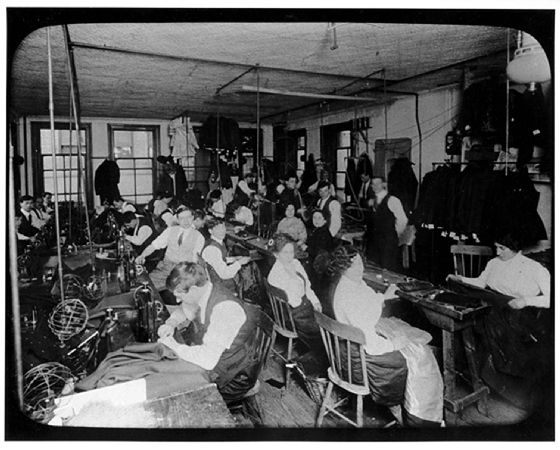Working conditions without regulation
Could working conditions in places that produce a huge amount of products improve while still allowing easy access to their products?
Backstory
Humans have been mass-producing things for a good while by now. We like to have easy access to goods like food and clothes, but somebody has to produce these things. Right now, that somebody is usually another human.
The industrial revolution made mass-production easier with machines that could help acquire and produce more goods. Employers were enamored with the idea of these machines, but they still need people to man them. This eventually caused a huge demand for workers as more and more machines were used. In the employers' lust for producing more and more while spending less and less, their factory workers suffered from terribly low pay and treacherous working conditions. It worked for the employers, who were able to expand and make more factories, but that only made the need for workers greater. Women and children were employed to work under these terrible conditions now, too (Carson and Bonk, 1999).
In America, the Socialist Labor Party, the Knights of Labor, and the Henry George movement were all significant in gaining the laws we have today. Enough that Friedrich Engels, a radical writer from Germany, proposed that they could help make America closer to his idea of a utopia in a book he wrote. The main focus of this book was on the terrible industrial working conditions he had witnessed in Manchester, England. He saw that people had become physically deformed and weak from working so long-- 12 hours of work a day was the minimum, and others had been injured severely or killed by the dangerous machinery (Engels, 1845). Some workers even faced physical abuse from their bosses. One women working in a flax mill recounted her workmates, who were young girls, being chained and beaten with a strap (Bentley, 2014).

The factory buildings back then had major problems too. They weren't held to the safety standards that we have today; these standards came hand in hand with labor laws. This predictably made the risk of accidents more common and more fatal. The Triangle Shirtwaist factory operated like this in 1911 in New York, producing clothing. The building itself was thought to be fireproof, but inside, all of the fabrics they used were very much flammable. The workers in this factory, mostly immigrant women, sewed the garments in small, tightly packed rooms on the three top floors. The only fire-safety precautions that were used were a few fire escapes, but they were kept locked "to guard against break-ins, but more accurately meant to contain the workers." There were many small fires leading to complaints and even a strike, but within the factory the issues weren't addressed. One day, just as the factory was shutting down for the day, a fire broke out on the eighth floor- the top third floor, and spread to the other two floors with workers. The door to the fire escape was, as usual, locked. When the firefighters arrived, they realized that the ladders were much too short and the water pressure too weak to reach the fires at all. 146 workers died because of that fire, and 70 more were seriously injured.(Carson and Bonk, 1999).
It is clear that before there were labor laws and things like that in The West, the conditions for factory workers were pretty bad.